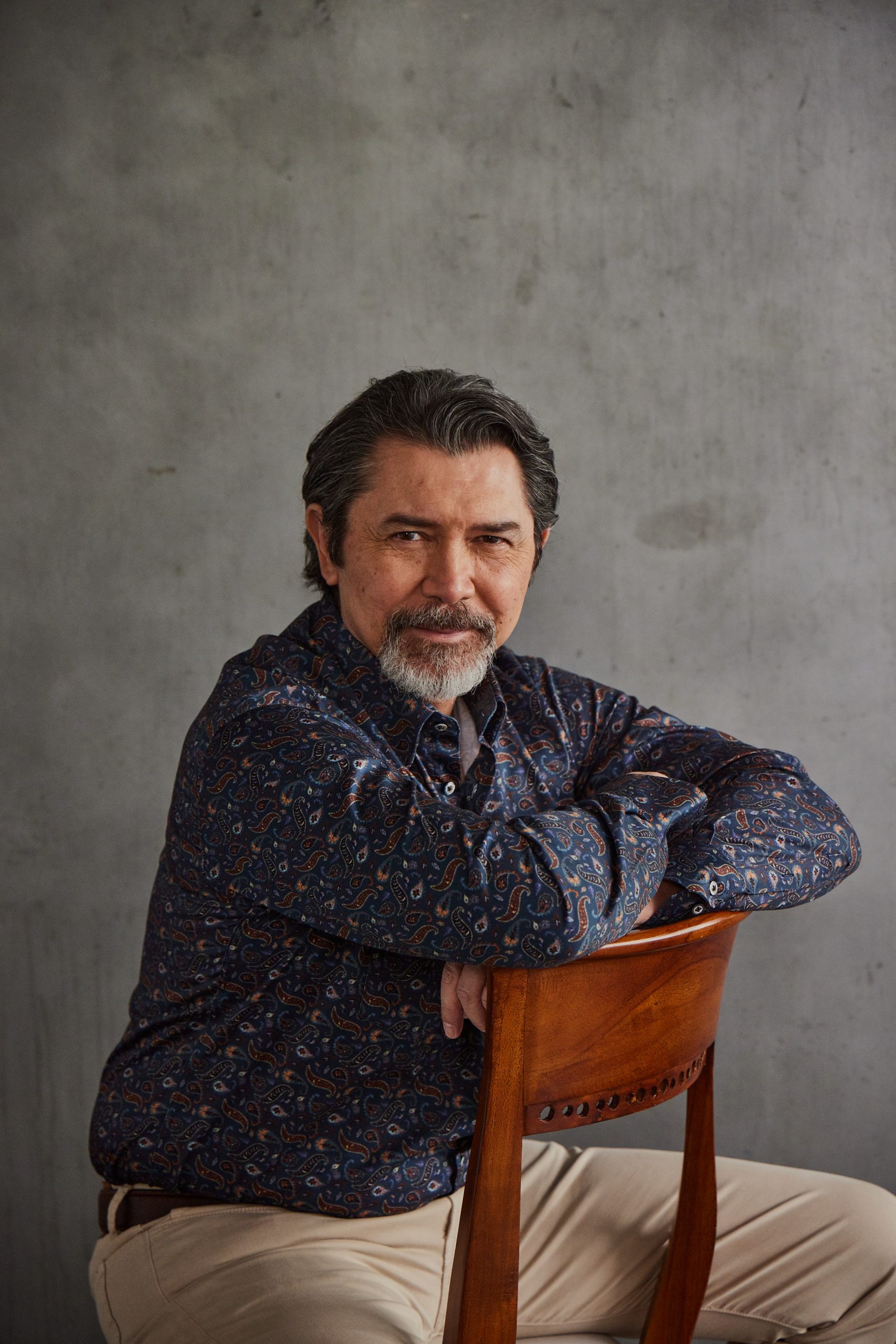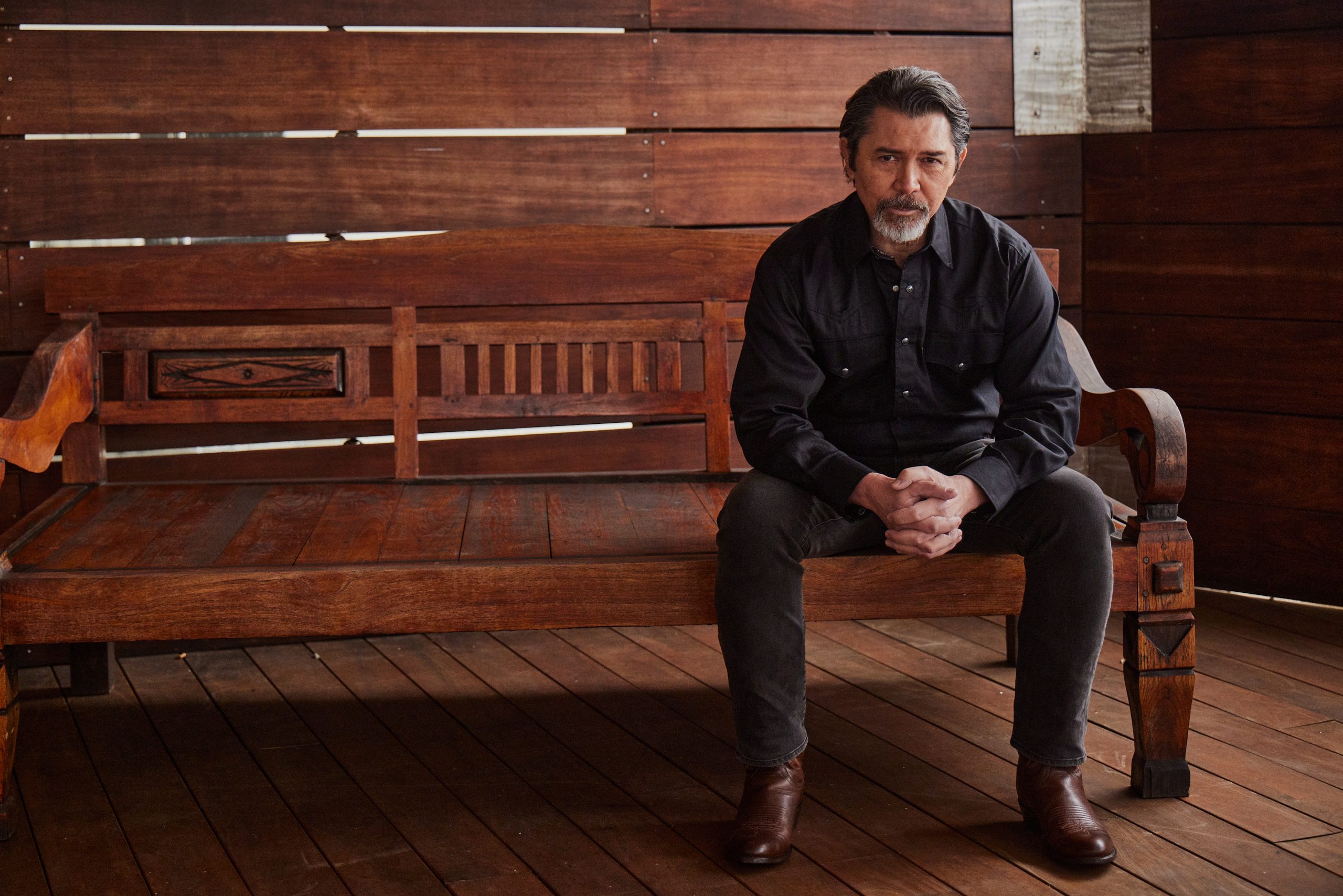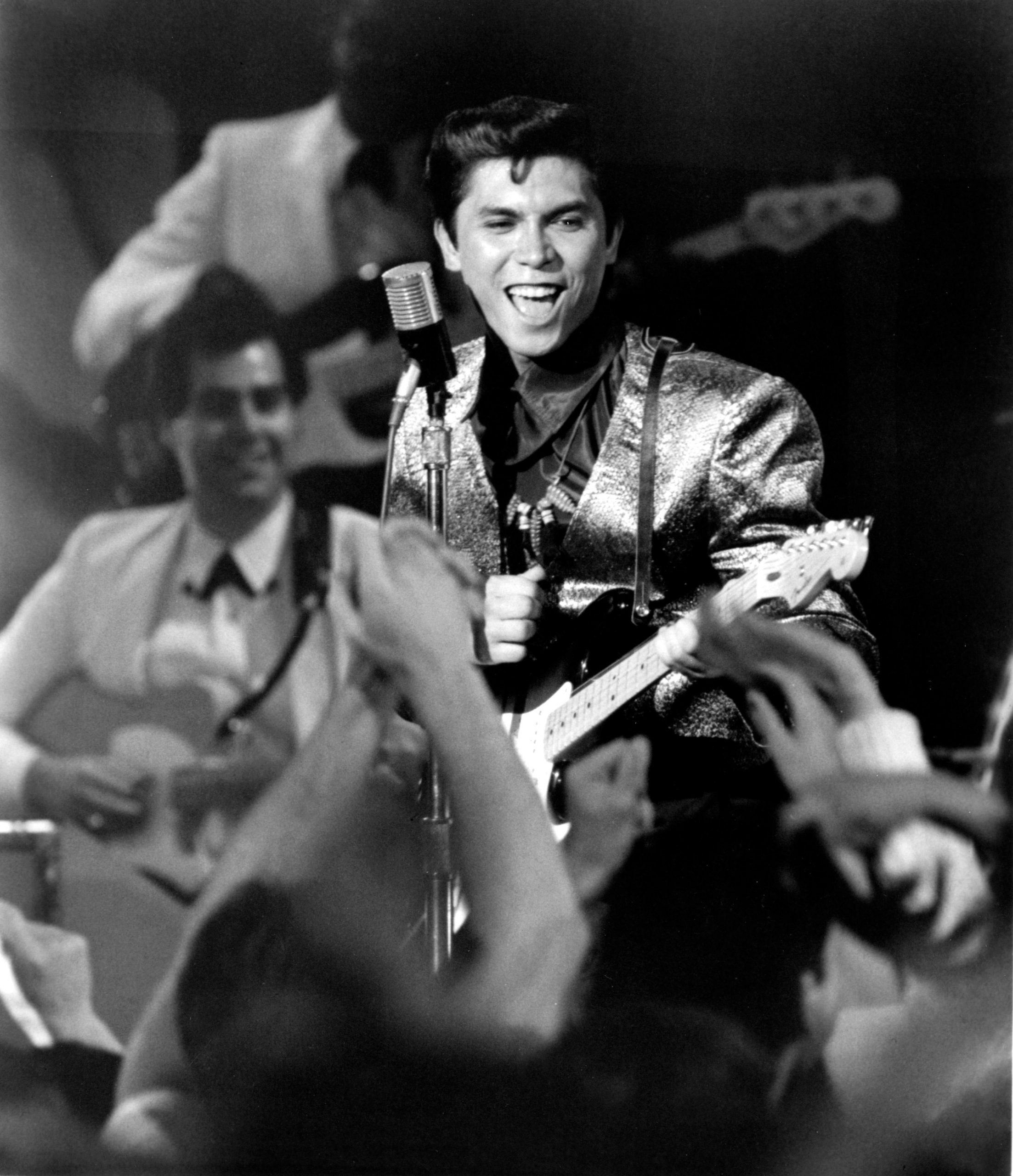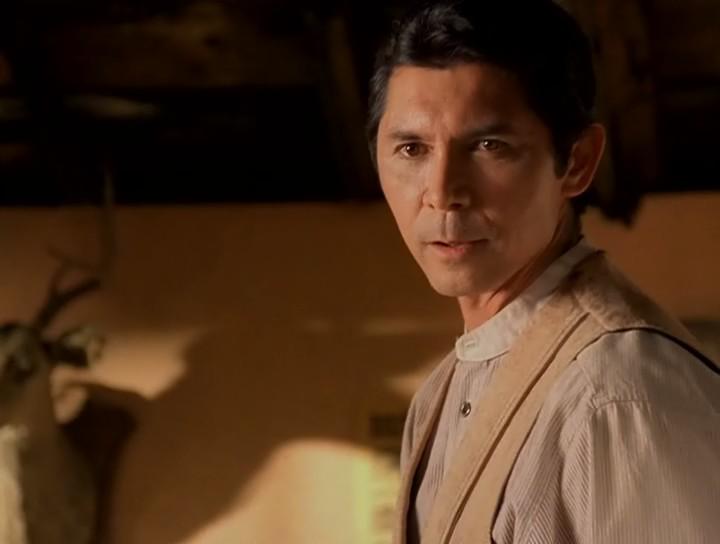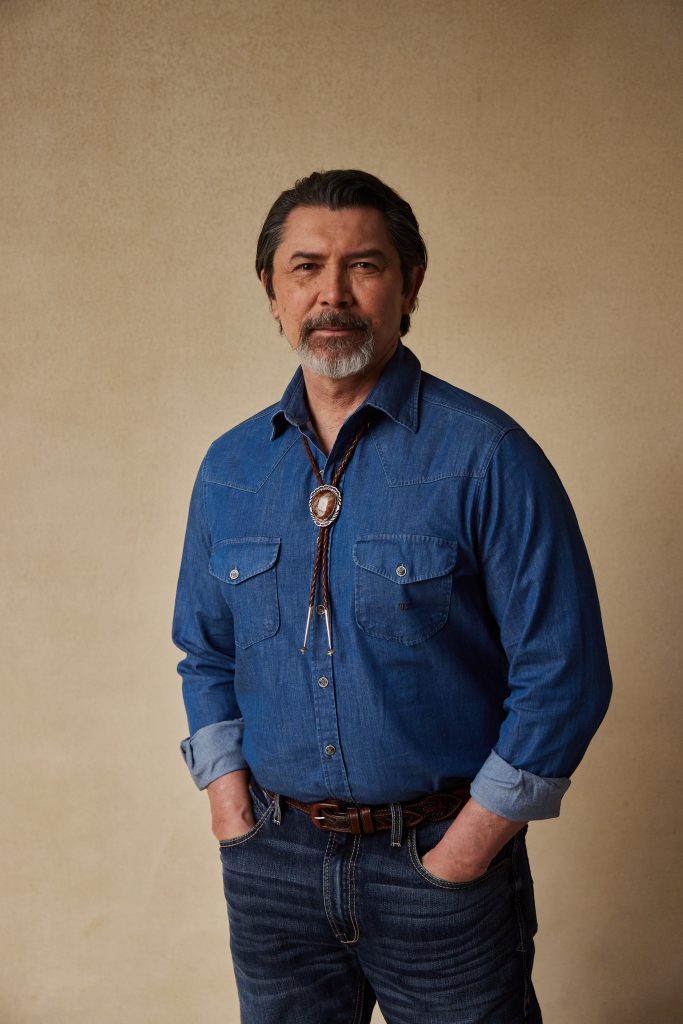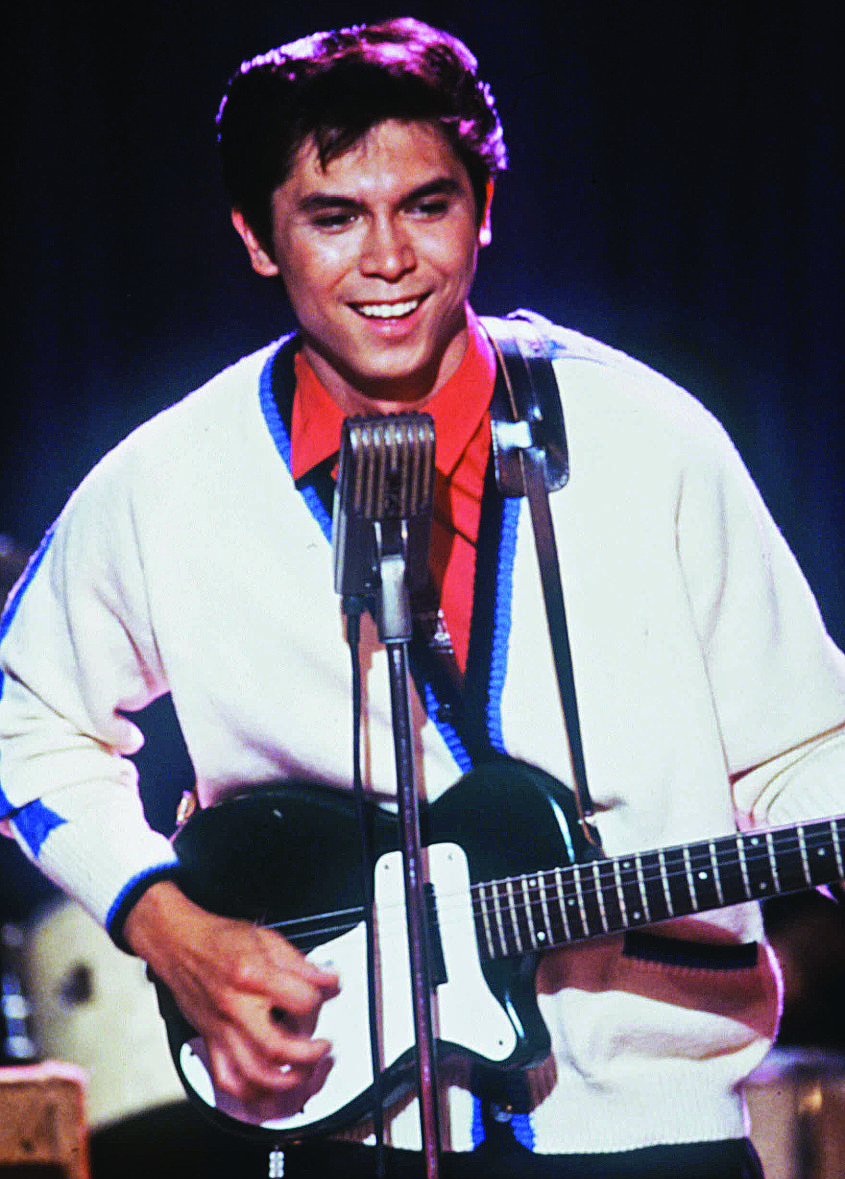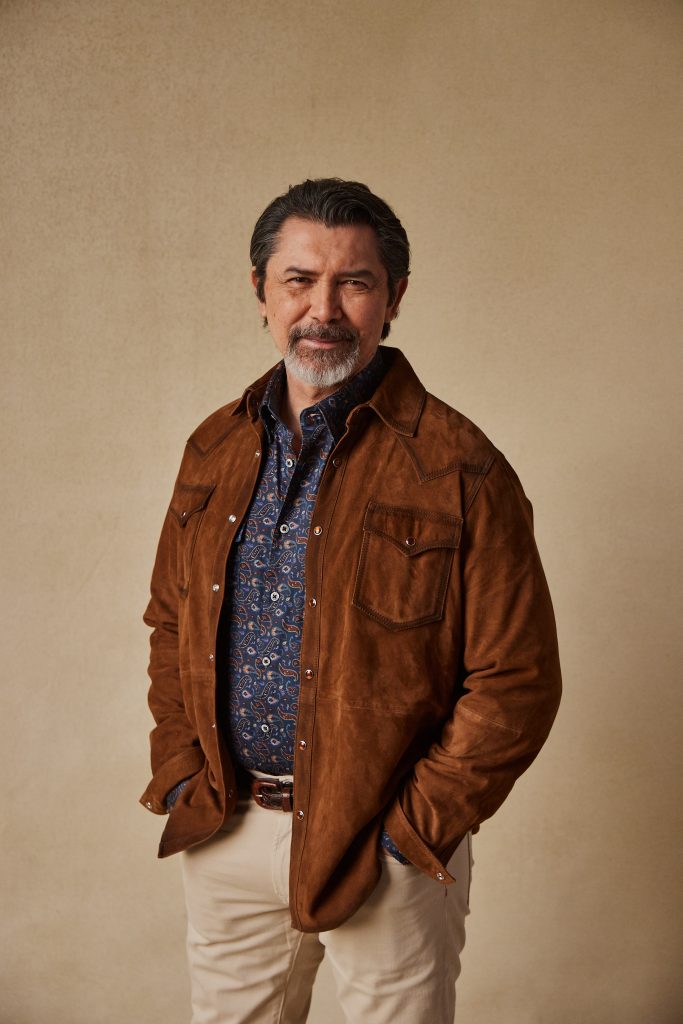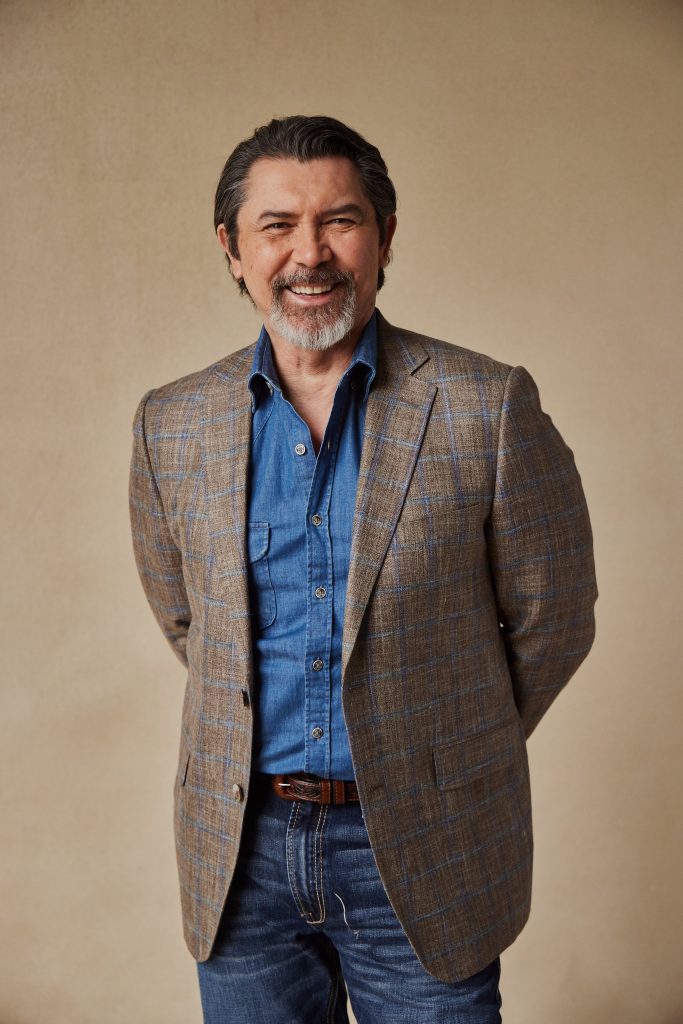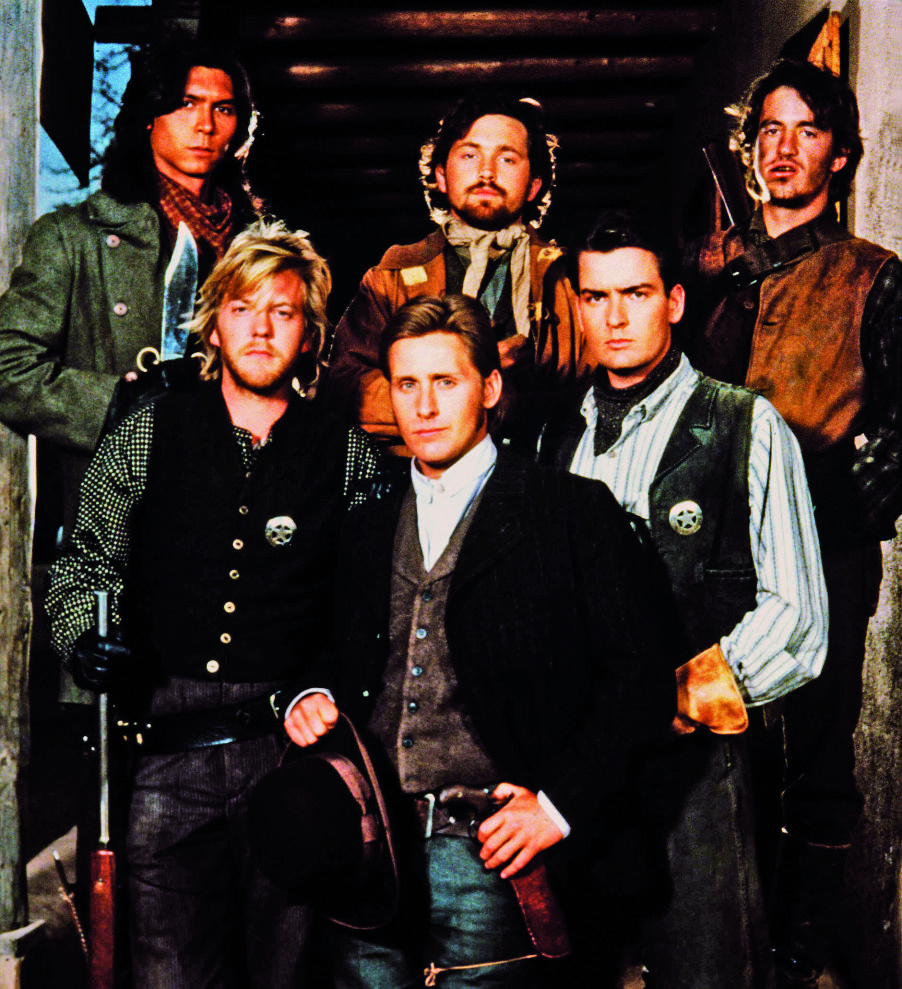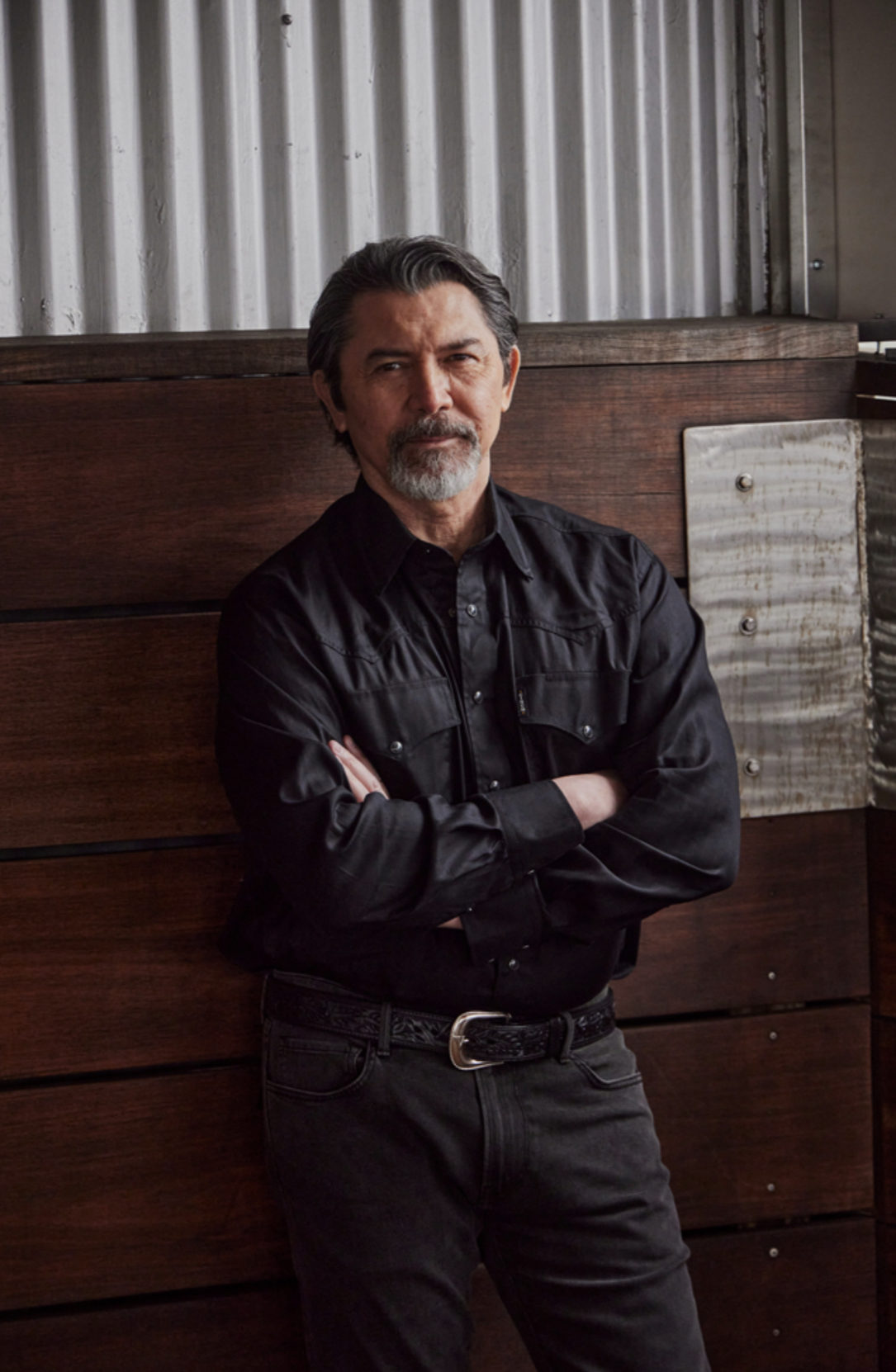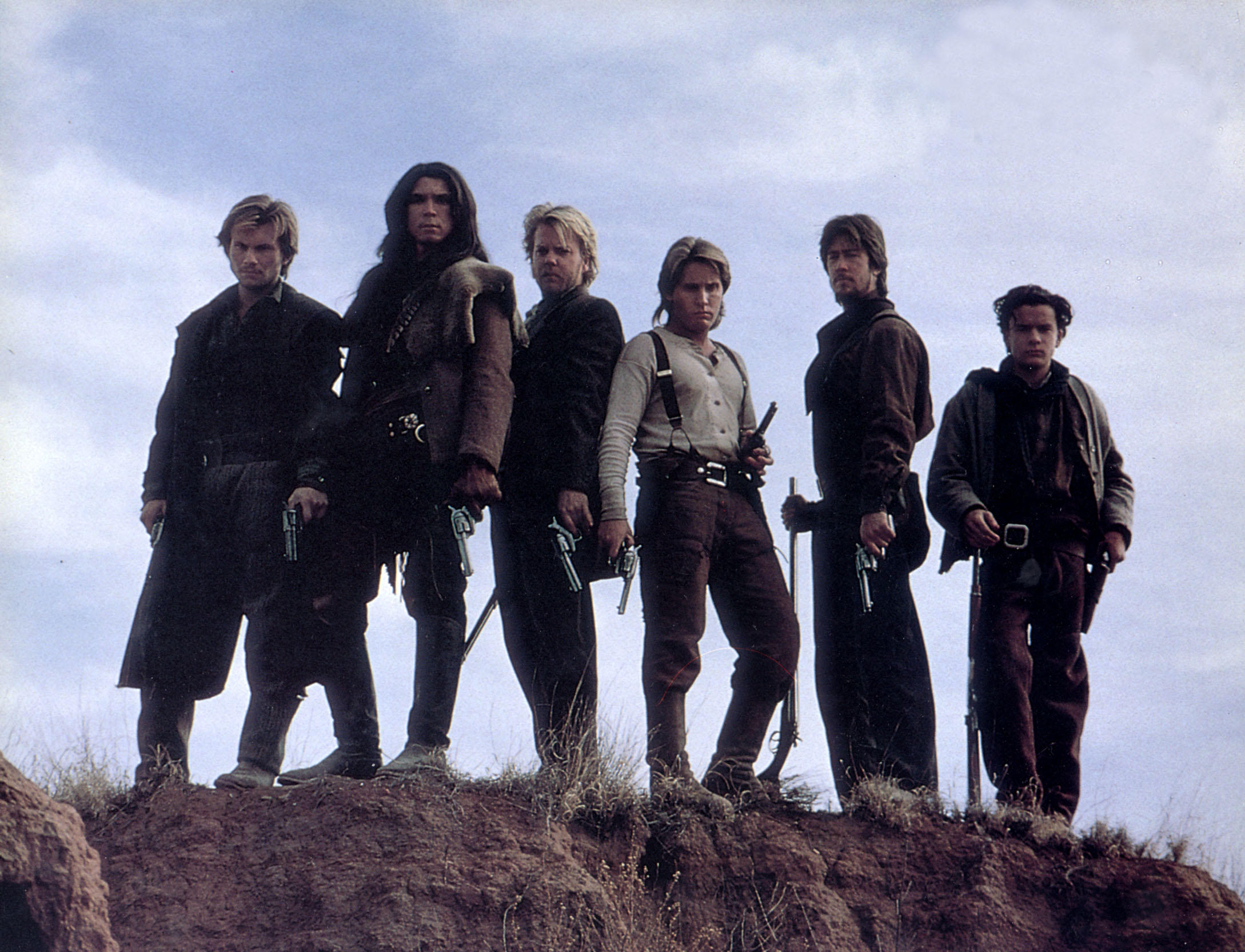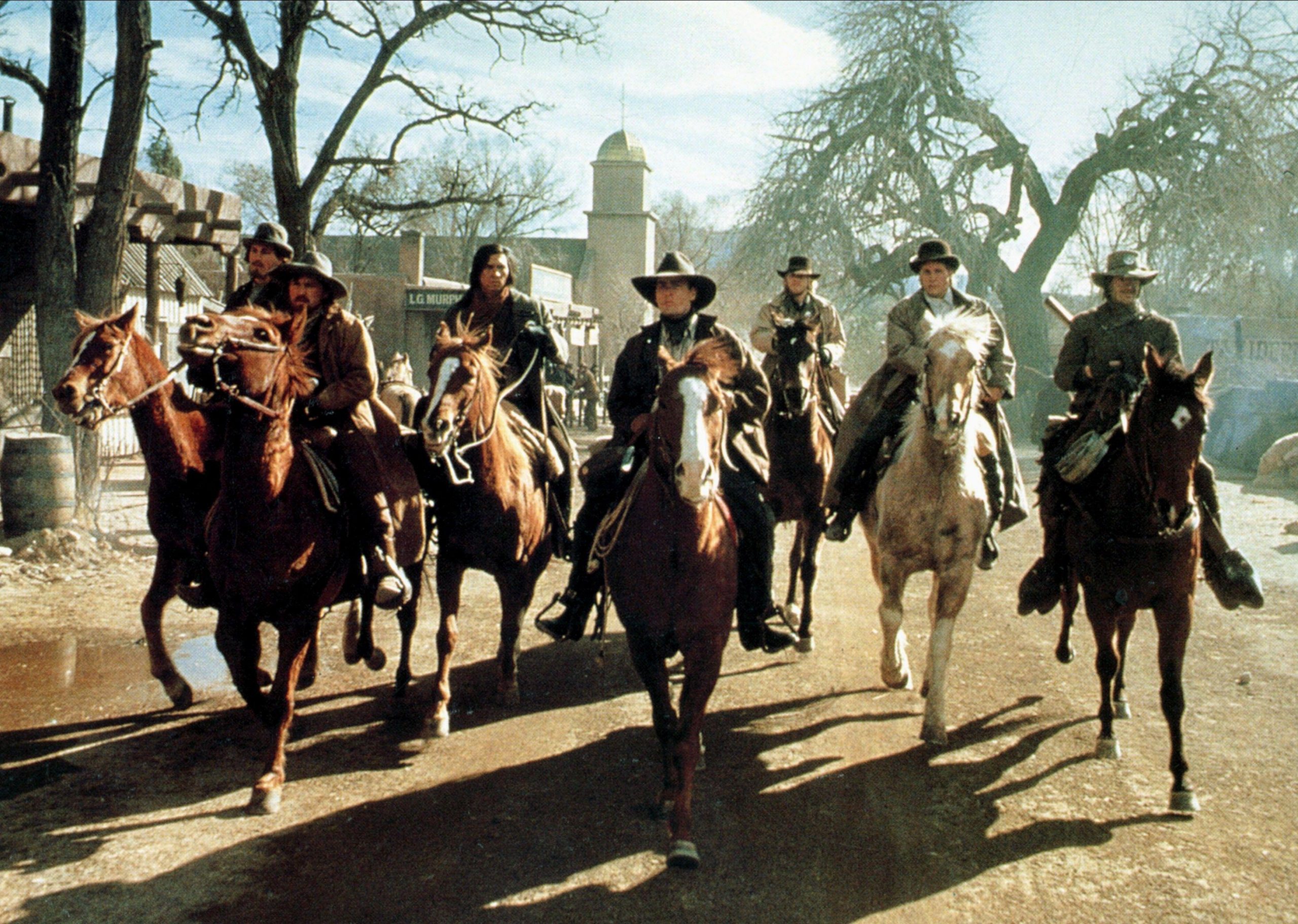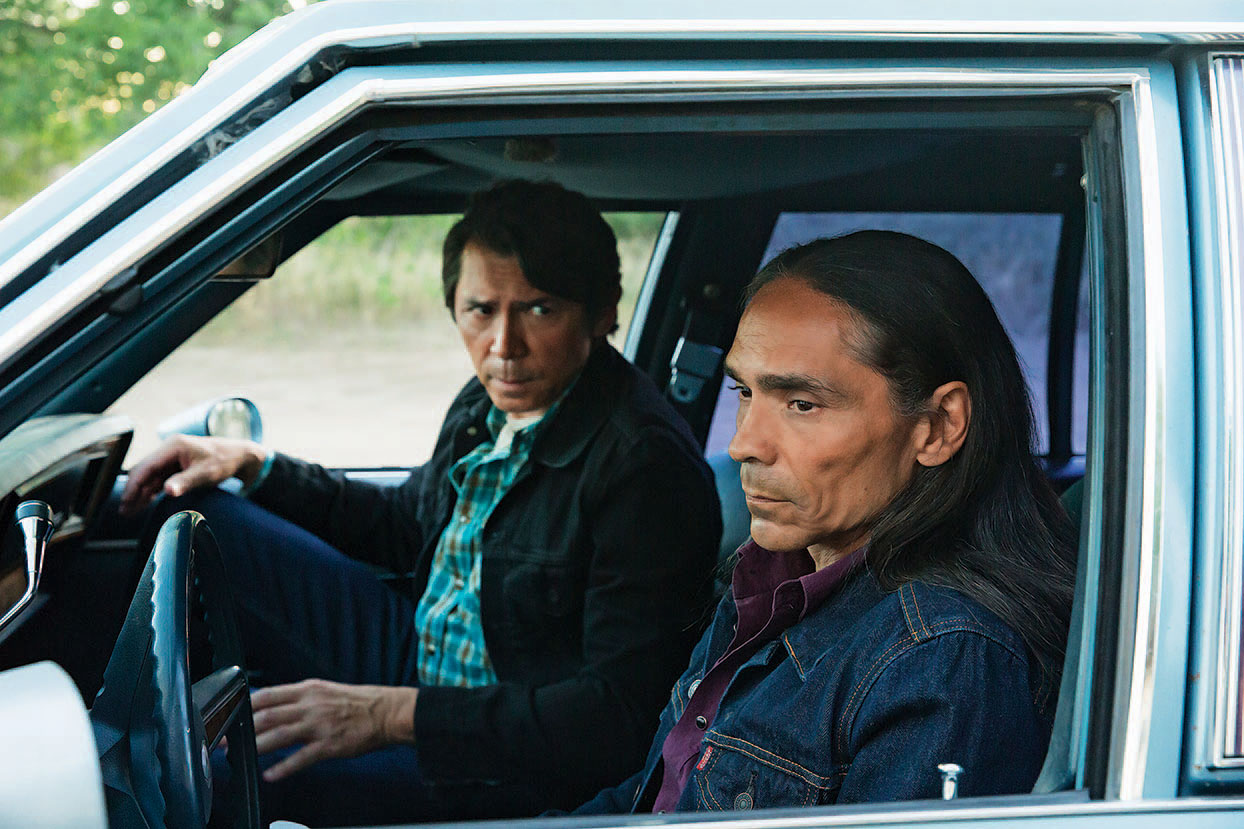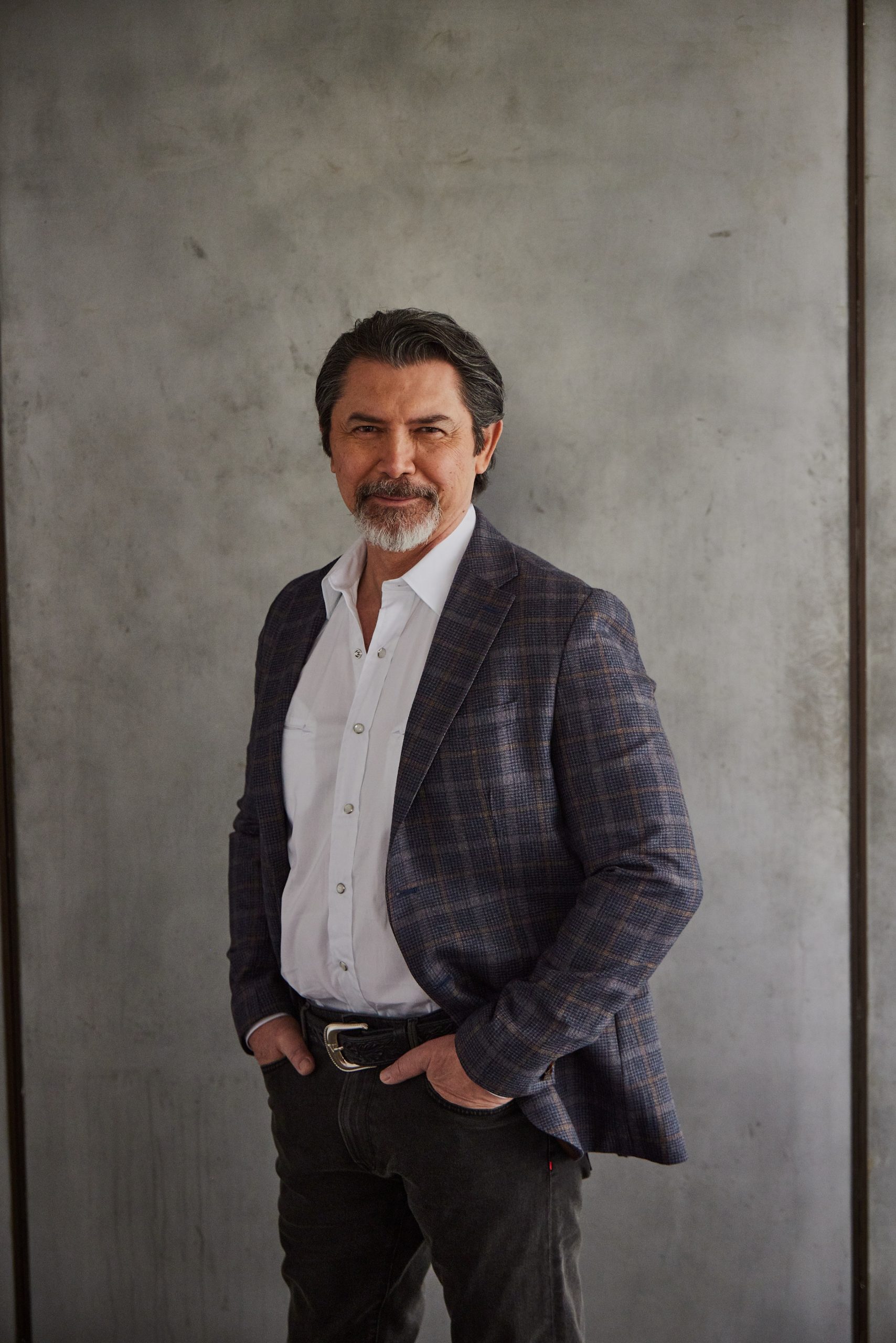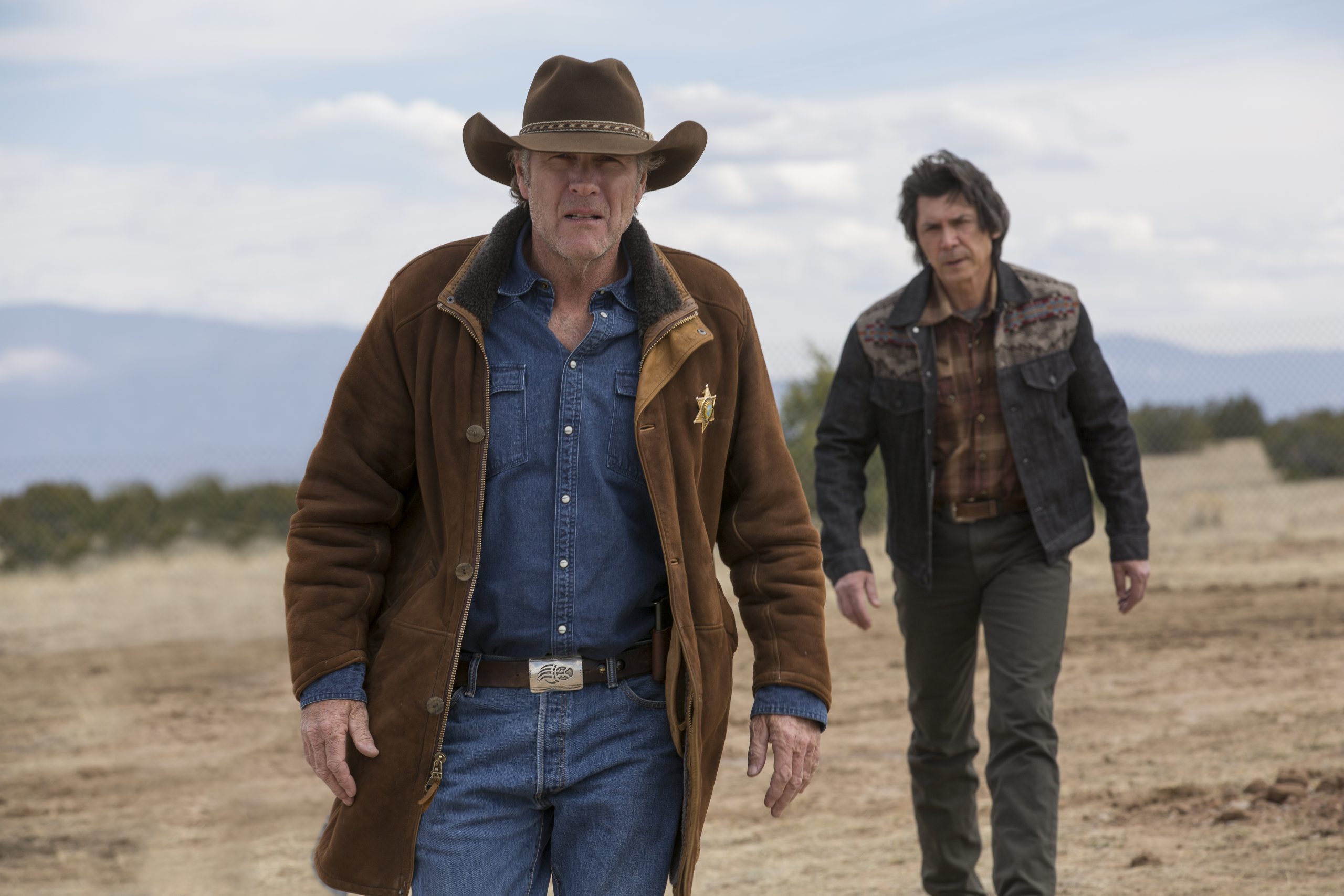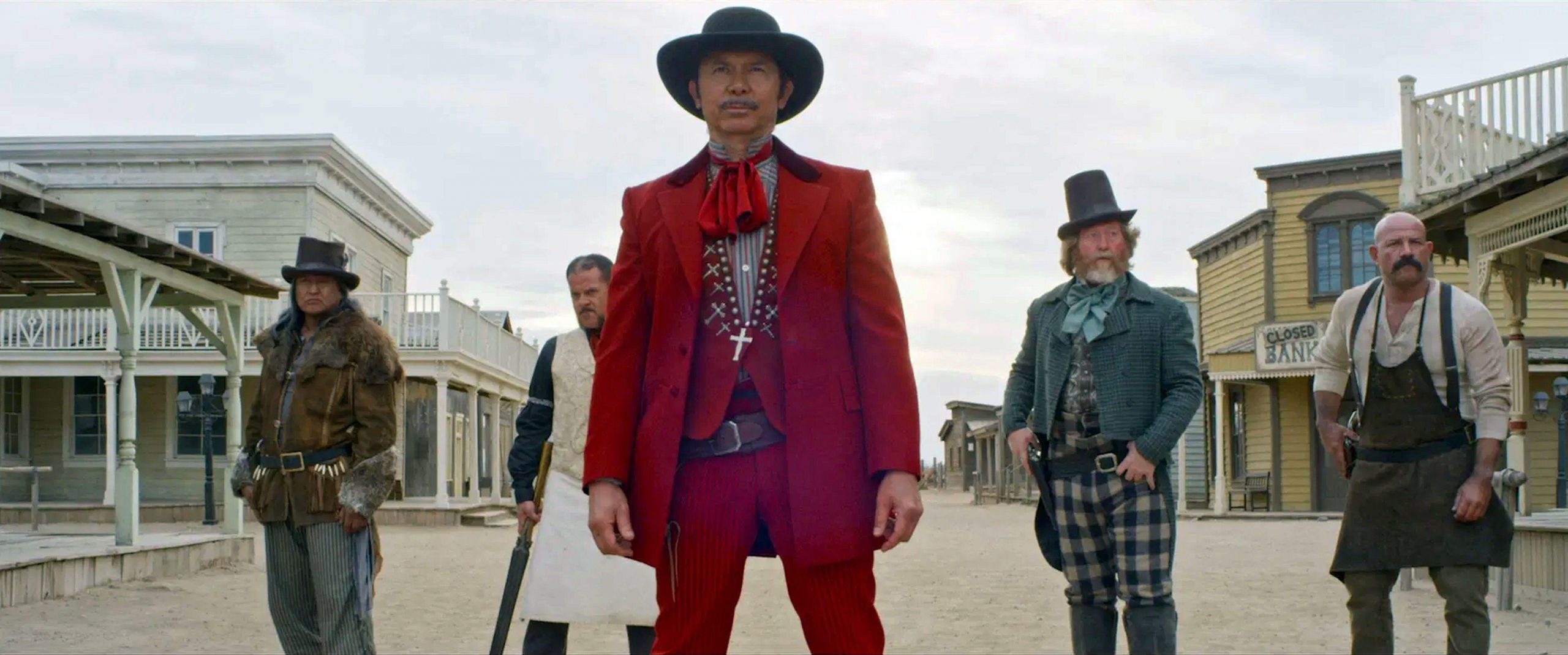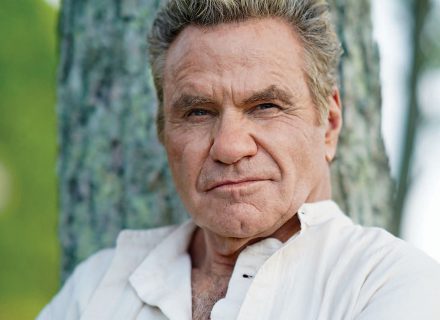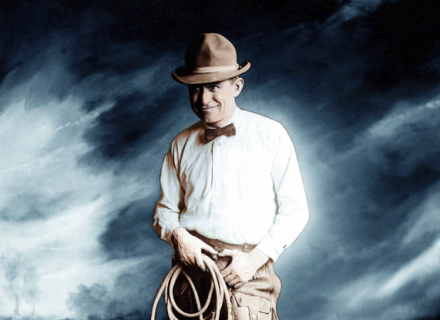On the eve of his induction into the Hall of Great Western Performers, multitalented star Lou Diamond Phillips chats about iconic screen roles, creating for the stage and the page, and following his passions down new pathways.
Lou Diamond Phillips offered me a hearty handshake and a heartfelt apology for being a few minutes late for our lunch at Sardi’s, the storied New York theater district restaurant where the walls are festooned with caricatures of past and current Broadway stars. But really, he had a good excuse: He was checking out his final edit of the episode of East New York that he had directed, one that was slated for airing in less than a month’s time.
There had been trouble with occasional rain during the on-location filming, he explained as the waiter neared our table, and that had forced director, cast, and crew to revise and improvise on the spot. In the edit, however, it had all come together smoothly — even a tricky scene in which two key characters managed to complete an extended outdoor dialogue without their umbrellas bumping together.
And now he was ready to celebrate a little.
“I’ll have a martini,” Phillips he told our waiter. “A dirty martini. Three olives.” Hey, he’s entitled.
And as we toasted, I noticed that, as I’d requested in our email exchanges, Phillips had indeed asked when he made reservation that we’d be seated at a table below his very own caricature, which had been added to the Sardi’s walls of honor when Phillips wowed critics and audiences as the lead in the 1996 Broadway revival of The King and I. So, of course, after we toasted each other, we mock-toasted the picture. And then asked the waiter to take a photo of us pointing at the picture. Trust me: Celebrity interviews don’t always begin on such a festive note.
Come April, Phillips will receive an honor of a different sort: He’ll be inducted into the Hall of Great Western performers at the 62nd Western Heritage Awards by the National Cowboy & Western Heritage Museum in Oklahoma City. The tribute serves as admiring recognition of the actor’s memorable performances in such films and TV productions as Young Guns (1988) and Young Guns II (1990), in which he played outlaw José Chavez y Chavez; The Dark Wind (1991), an adaptation of Tony Hillerman’s novel that cast him as Navajo Police officer John Chee; The Trail to Hope Rose (2004), a Hallmark Channel sagebrush saga co-starring Ernest Borgnine and Lee Majors; Lone Rider (2008), a made-for-cable oater with Phillips’ ex-soldier battling Stacy Keach’s corrupt land-grabber; Angel and the Badman (2009), a surprisingly satisfying remake of the classic John Wayne movie with Phillips impressively subbing for The Duke; Big Kill (2019), a seriocomic shoot-’em-up featuring Phillips as a notorious gunslinger with an impeccable fashion sense; and Longmire, the 2012-2017 series based on Craig Johnson’s novels that featured Phillips as Henry Standing Bear, the supportive friend of Sheriff Walt Longmire (Robert Taylor) and proud operator of the Red Pony Saloon and Continual Soiree.
Phillips, a Filipino-American actor born in 1962 at the Subic Bay Naval Station in The Philippines, dates his roots in westerns back to his youth in Texas. While attending Flour Bluff High School in Corpus Christi and University of Texas at Arlington, he worked as a fry cook at the quintessential Texas restaurant — Whataburger — and met a genuine Texas superstar during his employment as breakfast cook at a Padre Island Surf Shop. “My first brush with fame was making a Denver omelet for Willie Nelson who had the munchies at nine in the morning. Imagine that? And so, it was most important omelet of my life.”
As Phillips’ career has endured and prospered, from his breakthrough in La Bamba (1987) to his recent work on both sides of the TV cameras, so have his culinary ambitions. He laughs when addressed as a foodie, but readily agrees that he has come a long way from burgers and fries. “I was already good at cooking when La Bamba happened,” he said. “And as I started traveling all around the world, eating at really great restaurants, I started asking questions and picking up things.
“And I think when it really, really sort of took off for me was in 1990 when Bobby De Niro asked me to be partners at Tribeca Grill here in New York. I was like, ‘Hey, I’m in.’ And now all of a sudden, I’m a restaurateur. I remember when I told my business manager I wanted to invest in this thing with De Niro, he goes, ‘Lou, restaurant — bad idea.’ Well, you don’t understand: When I die, I can put, ‘I was Bobby De Niro’s partner’ on my tombstone, so I don’t care if I lose the money or not. And yet here we are, what, 30 something years later?”
Phillips has made New York his home base since moving here for the 2019-21 run of the TV drama Prodigal Son. He and his wife, Yvonne Boismier Phillips, “drove across country in one of those vans that the bands rent. We came over with my daughter — who was at the end of 11 at that point; she’s 15 now — and five cats and a dog. Which is why we drove.”
It’s possible, Phillips says, that the family may return to La La Land or thereabouts sometime in the future, depending on what and where future employment offers arise. For the time being, however, he’s perfectly content to be a New York homebody who occasionally acts. Or directs. Or writes. (He’s already at work on a follow-up to his 2020 debut novel, the sci-fi fantasy The Tinderbox: Soldier of Indira.) Or to enjoy the occasional lunch at Sardi’s.
C & I: You’re going to be joining some pretty stellar company in April when you’re inducted into the Hall of Great Western Performers. But you’ve certainly earned your place in the pantheon. What is there about westerns that appeals to you?
Lou Diamond Phillips: They are the American version of the parable, of the morality tale. Aesop’s Fables, Grimm’s Fairy Tales. Even the parables of the Bible. At their best, they bring about this finite world where questions of character and morality and nobility matter. Cowboys are the knights of the American mythology. And I love that.
C&I: And you’ve gotten paid to play cowboy. Pretty sweet deal.
Phillips: It’s so funny: In westerns, I’ve quite often been the Native point of view, which I’m very proud of. But yeah, whether it’s Lone Rider or The Trail to Hope Rose — or one that I really loved, Angel and the Bad Man — I got to be the cowboy. And espouse a lot of virtues that you try to live by. As an actor playing these characters, when you’re doing that research, when you’re thinking through these characters, it’s like, Wow, I hope that’s who I am. That honesty, that integrity. I’d like to be the kind of friend that Henry Standing Bear is to Walt Longmire. And yet also the kind of friend who can stand pat and go, “You’re wrong,” or, “No, this is what I believe. So, I gotta stand by that.”
C&I: Do you have a favorite western?
Phillips: One of my favorite films of all time — and it’s funny, because the poster hung in Henry Standing Bear’s office in Longmire — is Little Big Man. I mean, that is epic, man. That’s like Canterbury Tales or something. I mean, it’s the story of this person who goes through all of this history. He was the original Forrest Gump.
If you can believe Young Guns II producer/screenwriter John Fusco — and, really, there’s no good reason why you shouldn’t — Lou Diamond Phillips is the kind of collaborator you always want your movie set.
“Lou’s an entertainer,” he said during a recent C&I interview. “He is the real deal. He’s kind of a throwback. I remember one night when me, Emilio Estevez, pretty much all of us were down on the Mexican border, in a little cantina drinking tequila with James Coburn. Lou, true to his discipline, wanted to get to bed to be ready for [the] early shoot. He was first up, and as he left the table, he stood up and he said, ‘Goodnight everybody.’ And then he said, ‘Mr. Coburn, what a privilege and honor it is to be working with you, to be at this table with you, to hear your stories and your history. You blazed the trail for us, and you’re the real deal, and such a class act, and the rest of us are mumblers just trying to live up to your level.’
“And I remember James got all teary-eyed. He was kind of left speechless. He just said, ‘Well, thank you, Lou.’ That’s the kind of guy Lou is.”
Unfortunately, Fusco’s memories of working with Phillips on Young Guns II aren’t uniformly happy ones.
“We were in Galisteo, New Mexico,” he said, “and we were shooting the escape from the pit scene. And there’s fires, and Chavez and Doc (Kiefer Sutherland) have nooses around their necks. So, Lou was riding his horse. And all of this was a night shoot.
“Well, his horse had fallen asleep — like most of us — and the blanks that were fired were large loads, and I don’t think they were supposed to be. It wasn’t a Rust situation. There was never a firearms accident on any of the Young Guns movies, which I’m proud of. But we fired a pretty large load of blanks, and it woke the horse up, and he spooked and took off with Lou on him — and threw Lou.”
Things went downhill after that.
“If he had just been thrown, it wouldn’t have been so bad. But he was hanging from the noose, and it was supposed to be a breakaway noose, but it wasn’t. And the horse dragged him through woodpiles, windows, whatever. I had actually gone out to grab some dinner. When I came back, there was a medical helicopter leaving the set, and I remember jumping out and asking someone: ‘What happened?’ He was like, ‘It’s Lou! It’s Lou! He’s in serious condition!’ I was like, ‘Oh my God.’ And he wound up having nine screws in his arm.”
And if that weren’t bad enough: Because of Phillips’ injuries, director Geoff Murphy was not able to shoot a planned opening sequence that would have re-introduced the actor as José Chavez y Chavez, the same character he played in the previous Young Guns. “We’d meet Chavez,” Fusco said, “and he was in a Navajo village. Lou loved that scene. But…”
C&I: So, after that accident on the Young Guns II, were you reluctant to get back in the saddle?
Phillips: [Laughs.] Oh, I still ride. I still do. And I still get sore in places where I’m not aware of until I get on a horse. But, yeah, I had that major accident on Young Guns II. Got dragged, broke this right arm in four places. Took a chunk out of my kneecap.
C&I: And that’s when you start thinking: Maybe I could go back to flipping burgers at Whataburger?
Phillips: Exactly. Or stop doing my own stunts like an idiot. Although Tom Cruise hasn’t taken that advice yet, so God love him. But yeah, I’ve continued to ride. I rode a couple of times in Longmire, some beautiful shots actually. That one season opener in the snow was gorgeous. Cold as freaking all-get-out, but gorgeous. And there’s a number of the westerns that I did for Hallmark where riding was important.
C&I: I’m sure I am not the first person to tell you this, but I much preferred Young Guns II to the first Young Guns.
Phillips: I agree with you a lot. I loved the second movie. We set out to make a classic western in the second one, and Fusco says the same thing. We shot a big screen — it was a little more epic. Here’s a little tidbit that’s fricking mind blowing. James Horner did the score for Young Guns — but Fox fired him and replaced him with whoever those guys were. And they did this synthesized rock and roll score that I hate to this day. Because they wanted the MTV influence. And so that’s what we got wrong in the first one. But then in the second one, it was like, “All right man, let’s go old-school. Let’s go classic.” And it’s a much more classic film.
But you know, both of those films hold up, and they’re entertaining to this day. And you can’t say the same thing about every film that came out in 1988 or ’89. You know what I mean?
Craig Johnson vividly recalled what made him think, right from the start, that Phillips would be the perfect choice to play Henry Standing Bear in the TV series based on his Longmire novels.
“Whenever I saw the DVD of Lou doing the audition for Henry,” Johnson said during a call from his Wyoming home, “he dropped all the contractions. There were contractions in the scene that they had written for the audition, but he dropped the contractions. And in my books, Henry doesn’t speak with contractions. So, I knew when I saw the audition: “He’s read my books.” And he actually had. He had heard that the TV show was based off a series of books, so he went out and grabbed, I don’t know, two or three of the novels and read them over the weekend before he came in and did the audition for Longmire, which is really wonderful.
“He’s a voracious reader, which is not something you can say about all actors.”
Johnson’s enthusiasm dimmed only a bit when he realized that, at the time, Phillips was younger than the Henry Standing Bear in his neo-western mystery novels. On the other hand: Robert Taylor, the actor so perfectly cast as Sheriff Walt Longmire, also was younger than Johnson’s literary creation.
“The biggest conflict that I ever had with the producers,” the writer said, “was when they said, ‘We’re thinking about making Walt and Henry about 10 years younger than they are in the books.’ And that’s when I had the immediate cowboy redneck response, where I was like, ‘Well, now why are we doing that?’ And they said, ‘Well, because we’d really [like] the show to run for about 10 years, and we’d rather not have Walt and Henry on walkers by the time we get through to the end of the show.’
“So, I had to just shut up again and say, ‘Well, OK then.’”
C&I: A final question. Over the years, you have made films — including the Young Guns movies — where you played opposite fine actors, and the magic didn’t happen for them. Their careers just didn’t go beyond a certain level. Why you?
Phillips: That’s a really interesting question. Wow. That is a really interesting question.
C&I: Please don’t misunderstand. I don’t mean that to sound like, “Hey, how the hell are you making a living?”
Phillips: [Laughs.] No, I have to ask myself this sometimes, and it’s interesting. Let me couch this in terms of where we’re at in 2023. I was raised to be humble, whether it’s my military background through my father or the Asian background. You don’t toot your own horn; that was crass. Now we find ourselves in an era of blatant self-promotion, to the point where you have people making up résumés that don’t exist: “I’m the best at this, I’m the best you’ve ever seen.” To me, this is still offensive to my core.
But I will say this. I remember one review of a really bad film where it said, “Lou Diamond Phillips is acting like he’s trying to earn an Oscar.” And it’s like, yeah, that’s exactly right. If I say yes to a role, you got my best. For whatever reason, I took the film — and there’ve been many that I’ve taken where it’s like, “OK, there’s a ceiling on this, it’s only going to ever be so good.” And unfortunately, usually it went in the other direction, and then it’s like, “OK, it’s not even going to achieve the best that it can achieve, it’s just going to be a piece of programming.” But I cannot walk through a role. I will not do it; it is not part of who I am. I will give everything that I have to the role if I’ve said yes to you.
C&I: And when you’re fortunate enough to be associated with something like Longmire ...
Phillips: It’s amazing to see the staying power Longmire has. It was canceled six years ago, and people are still binging all six seasons. You can look at it today, and it’s still a great series. And I think that’s the one thing I have learned after all these years, after doing La Bamba, Stand and Deliver and the Young Guns movies — if your intentions are pure, and if you go in and you do the best work that you can do, you try to make the best film that you can make, give the best performance you can give, you are aiming for classicism. You’re not aiming for what’s trendy. You’re aiming for the long run.
Lou Diamond Phillips will be inducted into the Hall of Great Western Performers at the Western Heritage Awards on April 15 at the National Cowboy & Western Heritage Museum in Oklahoma City. Find out more at nationalcowboymuseum.org.
Featured in our May/June 2023 issue.







